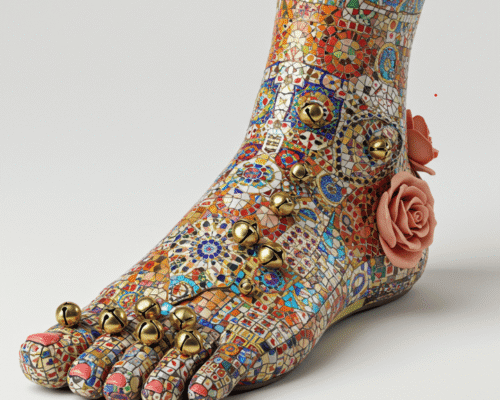Soft white lighting is a perfect choice for newborn photos because it creates a soft…
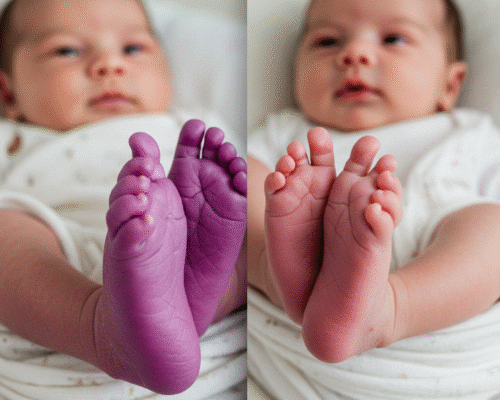
Purplish Feet Transformed into Beautiful Newborn Feet
Purplish feet in newborns are a common sight, especially in the early days after birth. The color change happens because of the way a newborn’s body adjusts to life outside the womb. Their circulatory system is still developing, and their tiny feet might not get enough blood flow right away. While this is usually harmless, it can be worrying for new parents. Luckily, with some simple care, the feet can change from a purplish hue to a healthy, warm color in no time.
Taking care of your newborn’s feet is easier than you think. By keeping them warm and making sure their circulation is working well, the purple color will often fade away. With gentle massages and the right clothing, you can help your baby’s feet look better and feel comfortable. This simple process can give parents peace of mind and make sure their little one stays warm and happy
Causes of Purplish Feet in Newborns
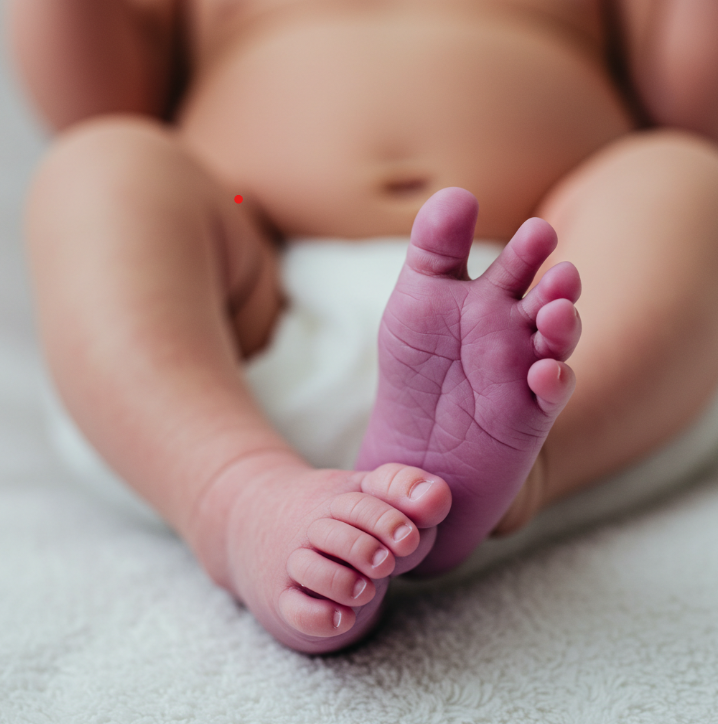 Newborns may experience purplish feet for several reasons. One of the main causes is the immaturity of their circulatory system. At birth, a baby’s body is still adjusting to life outside the womb, and their blood vessels are still developing. This can sometimes lead to temporary changes in skin color, especially in the extremities such as the feet. The baby’s blood flow is still developing, so their feet might look purple or blue sometimes.
Newborns may experience purplish feet for several reasons. One of the main causes is the immaturity of their circulatory system. At birth, a baby’s body is still adjusting to life outside the womb, and their blood vessels are still developing. This can sometimes lead to temporary changes in skin color, especially in the extremities such as the feet. The baby’s blood flow is still developing, so their feet might look purple or blue sometimes.
Another common reason is cold temperatures. Newborns have a limited ability to regulate their body temperature. In cooler environments, a baby’s body focuses on warming the organs first, which can cause poor blood flow to their feet and hands. As a result, their feet may look purplish or even bluish in some cases. This is particularly common during the first few days of life, when babies are still adjusting to external conditions.
In rare instances, purplish feet could indicate a more serious health condition, such as a problem with the heart or lungs. If a baby’s purple feet last or if there’s trouble breathing or blue lips, it could be a problem and should be checked by a doctor. However, in most cases, it’s temporary and improves as the baby’s body grows.
When to Worry About Purplish Feet
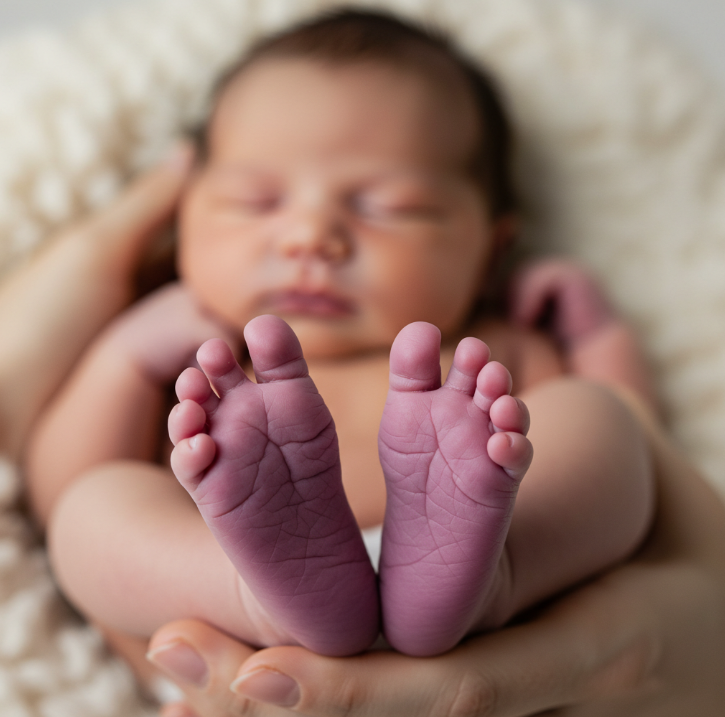 While purplish feet in newborns are often normal, there are times when it’s important to seek medical advice. If a baby’s purple feet last or they have trouble breathing or feeding, something may be wrong, and a doctor should be consulted.
While purplish feet in newborns are often normal, there are times when it’s important to seek medical advice. If a baby’s purple feet last or they have trouble breathing or feeding, something may be wrong, and a doctor should be consulted.
If a newborn’s purple feet come with signs like blue lips or a weak cry, it’s important to see a doctor. These symptoms could be signs of a more serious problem with the baby’s heart or lungs. In these cases, quick medical help is needed to rule out any health issues.
It’s also worth keeping an eye on how the baby is feeding. If purple feet come with poor feeding or low energy, it might mean the baby isn’t getting enough oxygen or food. Parents should trust their instincts and reach out to a healthcare provider if they feel concerned about their baby’s condition.
Simple Ways to Improve Newborn Foot Color
 Improving the color of a newborn’s feet is usually simple and can be done with basic care. One of the easiest ways is to keep the baby warm. Newborns often struggle to regulate their body temperature, and when their feet are exposed to the cold, they can take on a purplish hue. Wrapping the baby in a warm blanket or putting on socks can help improve circulation and return the feet to their normal color. It is important to secure that the baby’s room temperature is comfortable and not too cold.
Improving the color of a newborn’s feet is usually simple and can be done with basic care. One of the easiest ways is to keep the baby warm. Newborns often struggle to regulate their body temperature, and when their feet are exposed to the cold, they can take on a purplish hue. Wrapping the baby in a warm blanket or putting on socks can help improve circulation and return the feet to their normal color. It is important to secure that the baby’s room temperature is comfortable and not too cold.
A gentle massage of the baby’s feet can also help with circulation. Using a mild baby lotion or oil, gently rub the baby’s feet in a circular motion. This helps stimulate blood flow and can improve the color of the feet. Keep in mind that newborn skin is delicate, so always use gentle, light pressure when massaging. Foot massages not only help improve foot color but also provide a calming effect for the baby.
Lastly, secure the baby is dressed appropriately for the weather. If the baby is dressed too lightly for the environment, their feet may stay cold and take on a purple tint. Conversely, overdressing the baby can also lead to overheating, which can be uncomfortable for the newborn. Dressing the baby in layers and adjusting clothes for the temperature helps keep their body warm and improve foot color.
Tips for Keeping Newborn Feet Warm
 Keeping a newborn’s feet warm is necessary for their comfort and health. Newborns can’t regulate their temperature well, so their feet are often the first to get cold. One simple way to keep newborn feet warm is by using soft baby socks or booties. These should fit snugly but not be too tight. Loose socks may not stay on, while tight ones can restrict circulation, which could worsen the purplish appearance of the feet.
Keeping a newborn’s feet warm is necessary for their comfort and health. Newborns can’t regulate their temperature well, so their feet are often the first to get cold. One simple way to keep newborn feet warm is by using soft baby socks or booties. These should fit snugly but not be too tight. Loose socks may not stay on, while tight ones can restrict circulation, which could worsen the purplish appearance of the feet.
Another effective method is to keep the baby bundled in soft, breathable layers. A warm baby onesie combined with a soft blanket can help regulate the baby’s body temperature and keep their feet warm. Be sure to avoid overdressing the baby, as this can lead to overheating. The goal is to maintain a balanced temperature, where the baby feels comfortable and their feet stay warm.
Lastly, consider using a warm but not hot water bottle or heating pad in the baby’s crib to maintain warmth in the room. Be cautious with this method, as direct contact with a heating pad can burn the baby’s skin. A warm room will help the baby stay comfortable and prevent their feet from turning purple due to coldness.
Natural Remedies for Newborn Feet
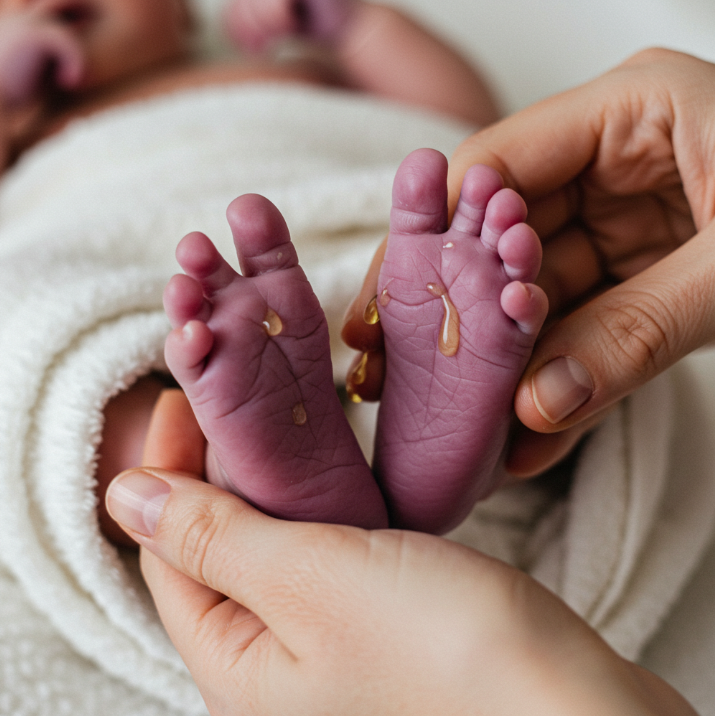 There are a few natural remedies that may help improve the appearance of purplish newborn feet. One such remedy is using natural oils for gentle foot massages. Olive oil or coconut oil is used because they are gentle on a newborn’s skin and help moisturize. Massaging the feet in circular motions with a small amount of oil can stimulate blood flow and promote warmth in the feet.
There are a few natural remedies that may help improve the appearance of purplish newborn feet. One such remedy is using natural oils for gentle foot massages. Olive oil or coconut oil is used because they are gentle on a newborn’s skin and help moisturize. Massaging the feet in circular motions with a small amount of oil can stimulate blood flow and promote warmth in the feet.
Herbal teas can also be used in a very mild form to create a soothing bath for the baby’s feet. Chamomile or lavender tea is known for its calming properties and may help relax the baby while improving circulation. However, it’s important to make sure that the tea is cool and not too hot before using it on the baby’s feet. Always check the water temperature before placing the baby’s feet in any liquid.
Additionally, using warm, damp cloths for a gentle foot compress can help. Soak a soft cloth in warm water (but not too hot), wring it out, and gently place it on the baby’s feet for a few minutes. This can help relax the baby and improve circulation to the feet, helping to restore their normal color.
How to Gently Massage Newborn Feet
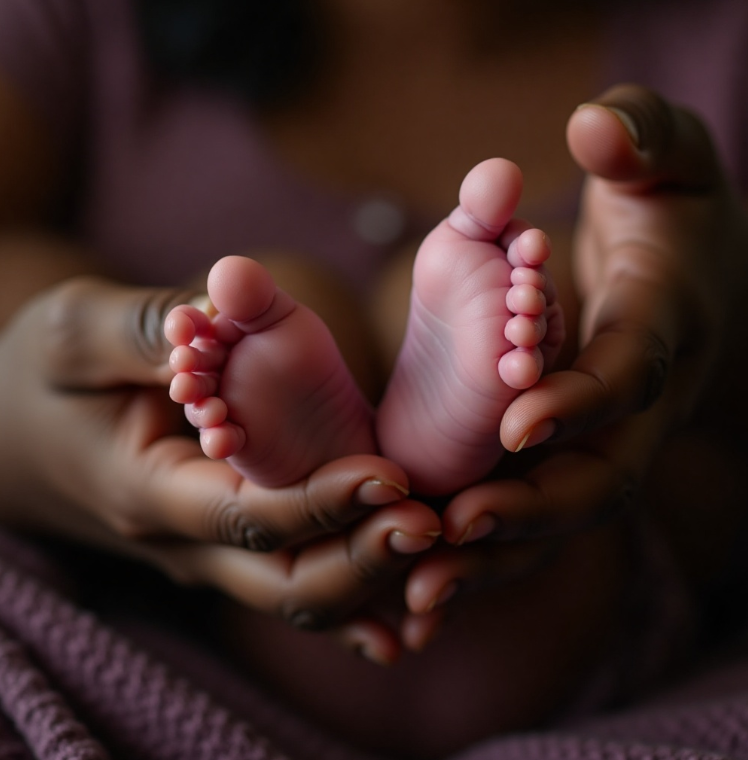 Massaging a newborn’s feet is a great way to improve circulation and comfort. When doing so, it’s important to use gentle, slow motions. Start by warming your hands before touching the baby’s feet. Newborns have sensitive skin, so it’s important to be gentle to avoid any discomfort.
Massaging a newborn’s feet is a great way to improve circulation and comfort. When doing so, it’s important to use gentle, slow motions. Start by warming your hands before touching the baby’s feet. Newborns have sensitive skin, so it’s important to be gentle to avoid any discomfort.
Begin with the toes, lightly massaging each one individually. Move from the tips of the toes down to the heel, gently pressing along the soles of the feet. Be sure to use very light pressure, as newborn bones and muscles are delicate. Avoid any hard or deep pressure that could be uncomfortable for the baby. You can also massage in a circular motion to help stimulate blood flow and encourage warmth.
If you’re using baby lotion or oil, apply a small amount to your hands before starting the massage. This will help your hands glide more easily across the baby’s feet. Always use a mild, baby-safe lotion to avoid any irritation. Regular, gentle foot massages can also be a bonding experience for the baby and a calming ritual.
Foot Care Routine for Newborns
 Creating a simple foot care routine for newborns is important for their overall well-being. While newborns don’t need intense foot care, there are a few basic steps that can promote healthy feet. First, always secure that the baby’s feet are clean and dry. After bath time, gently dry the baby’s feet, especially between the toes, to prevent any moisture buildup. Keeping the feet dry helps prevent irritation and fungal infections.
Creating a simple foot care routine for newborns is important for their overall well-being. While newborns don’t need intense foot care, there are a few basic steps that can promote healthy feet. First, always secure that the baby’s feet are clean and dry. After bath time, gently dry the baby’s feet, especially between the toes, to prevent any moisture buildup. Keeping the feet dry helps prevent irritation and fungal infections.
Secondly, pay attention to the baby’s nails. Newborn nails grow quickly, and it’s important to keep them trimmed to avoid scratching the baby’s delicate skin. Use baby nail clippers or a soft emery board to trim nails carefully. Be cautious not to cut too close to the skin, as this can cause injury.
Lastly, always check for signs of infection or irritation. If you see redness, swelling, sores, or blisters on the feet, get medical help. Regularly checking the feet will help keep them healthy and comfortable.
When to Consult a Pediatrician
 If a baby’s purple feet don’t get better or if there are other concerns, see a pediatrician. If the feet stay purple after warming, or if the baby is uncomfortable, has trouble breathing, blue lips, or isn’t feeding well, see a doctor.
If a baby’s purple feet don’t get better or if there are other concerns, see a pediatrician. If the feet stay purple after warming, or if the baby is uncomfortable, has trouble breathing, blue lips, or isn’t feeding well, see a doctor.
A pediatrician can help rule out any underlying conditions that may be causing the purplish color in the feet. Heart or lung problems can cause skin color changes and need medical attention. If the baby’s feet stay cold and purple even after care, see a doctor.
Always trust your instincts as a parent. If something doesn’t seem right, it’s better to consult a pediatrician for reassurance and guidance. Early diagnosis and care are important for ensuring the baby’s health and comfort.
Conclusion
Purplish feet in newborns are usually a temporary condition caused by the body adjusting after birth. By keeping your baby warm and giving gentle massages, you can help their feet return to a healthier color. It’s normal to worry, but usually, this fixes itself with a little care.
If the purple color lasts or you see other concerns, it’s a good idea to contact a pediatrician. They can provide guidance and check that everything is developing properly. With patience and proper care, your baby’s feet will improve quickly, and you’ll feel more confident in taking care of their health.


